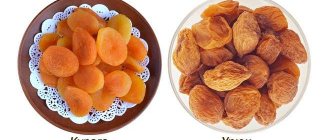There is flour in every home, the amount depends on the frequency of use. Housewives who love to pamper their family with fresh baked goods prefer to have sufficient supplies.
Flour is very demanding on the conditions in which it is found. It easily absorbs moisture and odors, and can be a source of food and breeding ground for insects and rodents.
There are several simple recommendations that will preserve all the properties of the product and prevent the appearance of insects.
How to properly store flour at home
Flour is a product obtained by grinding cereals: wheat, corn, oats, rye, flax and others. In everyday life, the product most often used is finely ground wheat.
Whatever flour is made from, it is very sensitive to high humidity and changes in temperature, quickly absorbs odors and attracts insects.
To preserve a product suitable for consumption, several conditions must be met:
- Humidity.
There should be as little as possible in the storage area. The maximum allowable limit is 60%. At higher humidity, lumps form in the flour.
- Temperature.
The room temperature should not exceed 20°C. Flour retains its properties best in the temperature range from 5 to 15°C. It does not tolerate sharp and frequent temperature fluctuations very well - this leads to the appearance of condensation on the packaging and the formation of lumps.
The most unsuitable place to store flour is in a room with high humidity and temperature. When warm, the wet product becomes a breeding ground for fungi, bacteria and insects.
At what temperature can flour be stored for a long time?
All types of flour differ in composition, which affects how long the product can be stored at home. The varieties most quickly lose their taste are those made from raw materials with a high fat content (flax, corn, almonds).
At temperatures from zero to 5°C, wheat flour remains suitable for use from six months to 8 months, rye flour up to 6, soy and corn from 3 months to six months. Deodorized varieties made from soy and corn can be stored for about a year.
Some manufacturers indicate longer shelf life on the packaging; it is better to avoid such a product; it probably contains synthetic additives.
Some housewives periodically use rarer types of flour - flaxseed and almond. Almond oil gives baked goods a specific taste, while flaxseed oil is often used to cleanse the body.
It is recommended to store almond flour in an airtight container in the refrigerator for no more than 2 months. It is better to keep flaxseed in fabric bags and use it within 2 weeks.
What determines the shelf life of flour?
The duration of preservation of food ingredients is influenced by many conditions. First of all, this is the quality of the product, how fresh it is. Some manufacturers indicate on the label only the date of packaging of flour, and not its milling. In addition, before grinding, the grain could be stored for quite a long time. The situation is even worse with goods sold in bulk: there is no information on the date of manufacture at all.
Factors on which the preservation of flour depends:
- Type of product, its composition. Depending on what crop the powder is from, it contains more or less fat and protein. It is these components that affect the shelf life. The more lipids in flour, the faster it will deteriorate and go rancid. It will have an unpleasant aftertaste and you won’t be able to cook anything from it. When handled correctly, premium wheat does not lose its properties for a year, corn for 10 months, oatmeal will “last” no longer than 4 months. Almond and other types of nuts and flax are prone to rapid rancidity. Since more protein and fat get into lower grade goods and whole grain flour along with the shells, they will spoil faster than refined types (highest grade).
- Humidity. For all bulk goods this parameter is of great importance. If the moisture content in the environment is significant, then the crushed grain will begin to become damp, clump, and become moldy. Ingredients containing fungus should not be eaten, just like feeding them to farm animals.
- Temperature. The rate of fat oxidation depends on environmental parameters. When exposed to direct sunlight or in the heat, products that contain a lot of lipids quickly go rancid.
- Presence of pests. If moths or any bugs appear in other goods nearby, then all these living creatures will very quickly end up in flour. Therefore, it is important to inspect not only it, but also other treats for insects: cereals, cookies, breadcrumbs, nuts and dried fruits, medicinal herbs, poppy seeds and any seeds. The longer you keep supplies at home, the greater the chance that bugs will appear in them.
How can you store flour at home?
At retail outlets, the product is sold either by weight or packaged in paper packaging. Before opening the factory package, flour can be stored in it, but then you need to take care of a new container.
You can keep flour in an open paper bag, but only in the refrigerator.
To extend shelf life, the product must be dried to prevent mold and insects. You can do this in several ways:
- on clean paper or parchment: spread in a thin layer and leave in a dry room for 30-60 minutes;
- on a baking sheet in an oven preheated to 50 degrees for 10 minutes;
- in the freezer for 24 hours.
Dried flour can be poured into containers for long-term storage. First you need to wash it with soda and dry it. An indispensable condition is that the container must have a hermetically sealed lid.
For this use:
- glass jars;
- plastic containers;
- metal containers.
The product may change taste if exposed to sunlight for a long time, so the packaging should be opaque or kept in a dark place.
In addition, flour can be stored in linen bags. This material allows air, moisture and odors to pass through, so small amounts of product can be stored in such packaging for a short period of time. To protect against the penetration of insects, the bag can be kept in a cool solution of table salt.
It is almost impossible to ensure complete tightness, so containers with flour should be kept separate from products with strong odors (spices, natural coffee, flavored tea).
Prevention of pests in flour
When buying flour, it is impossible to know what quality it is. All that remains is to be interested in the dates indicated on the packaging.
Having brought the package home and poured out the contents, it is recommended to do the following in order to prevent the appearance of bugs:
- put 2-3 cloves/1 kg, change every month;
- Place a cotton bag with dried marigold flowers next to or in a jar, change it after three months;
- put 5-6 pieces of bay leaves or several pieces of mint chewing gum;
- Wash the cotton bags, rinse them, soak them in a strong saline solution (3-4 tbsp/1 l), dry them - insects will not lay eggs in them;
- Pour pyrethrum powder (a pharmaceutical preparation) in the corners of the cabinets - it is safe for humans, but the beetleworm cannot tolerate it, renew every 1.5-2 weeks.
The problem of bugs appearing in flour can be solved; the main thing is to know what to do, maintain cleanliness, and check long-term stored products more often. In the summer, to prevent any insect from entering the living space, cover the windows with nets, use “Raptor” or another product.
Hope
Hello! My name is Nadya. I am glad to see you on my website “Housewife Blog” about housekeeping. I am a working housewife, so I am very interested in topics about how to clean quickly and efficiently, cook deliciously, and have fun relaxing. I'll be glad to meet you. If you have any questions, write in the comments or through the contact form marked “for Nadya.”
Where to keep flour
For long-term storage in an apartment, places with low humidity and constant temperature are suitable. It can be:
- Kitchen cabinets.
Housewives usually use wall-mounted ones, but those that stand on the floor are much more suitable. Below, the temperature is usually 1-2 degrees lower and more stable.
- Pantry.
- Refrigerator shelf.
- A balcony or loggia is suitable for storing large supplies in winter, provided that they are glazed and insulated.
It is recommended to allocate a separate shelf for flour or place it away from vegetables.
Containers for storing flour and cereals
Many housewives, after purchasing bulk products in a store, do not pour them into special containers, but leave them in their original packaging. This significantly reduces the storage time due to the lack of tightness.
We recommend: How to store cranberry juice at home and cranberries at home
After some time, paper or plastic packaging becomes unusable, cereals become damp, crumble, or become infested with harmful insects. For convenience and safety of products, it is recommended to use special containers:
- ceramic containers;
- plastic cans;
- glass containers;
- metal containers or stainless steel.
Hardware stores sell containers for every taste, color and budget. Many people choose storage containers based primarily on aesthetic preferences, taking into account the design of the kitchen. However, in order for bulk products to retain their taste and benefits for a long time, in addition to appearance, it is important to take into account other criteria.
Ceramic containers
Ceramic containers are considered the best containers for storing cereals. They are airtight, practical, and pleasing to the eye with an attractive design. This container is suitable if you prefer to store food on open shelves.
Ceramic jars do not allow sunlight to pass through, making them ideal for open storage. And their beautiful design gives the kitchen a special touch.
Plastic containers
Plastic containers are lightweight, practical and convenient. When using them, the load on the cabinet will be minimal. To optimize shelf space, choose a square or rectangular container.
When choosing a plastic container, pay attention to the quality of the material. Low-quality plastic has an unpleasant foreign odor, which will certainly affect the taste of the products.
Metal cans are beautiful and durable, but have one major drawback - over time, they develop rust stains. Similar stainless steel products do not have this drawback, but they are also more expensive than other containers.
Glass jars
Glass containers are convenient and beautiful, have a variety of designs, and you can clearly see what cereals are stored and in what condition they are. Transparent glass jars are airtight and easy to clean.
The only drawback is that they break easily. Bulk products in glass containers are stored in a dark place without access to direct sunlight.
How to store flour without getting bugs
Flour and cereals are favorite places for insects. If storage rules are violated, bugs may appear in them, the larvae of which are difficult to notice. To protect products from contamination, experienced housewives place in containers:
- Unpeeled garlic (2 medium cloves per kilogram), which releases
phytoncides that repel most insects.
- Dried calendula flowers are suitable for the safety of flour stored in
linen bag. It is placed in a larger fabric package, and the space is filled with a fragrant plant.
- Bay leaf or cloves. The aroma of spices repels pests.
- Table vinegar will protect the entire contents of the cabinet from insects. For
To scare away unwanted guests, it is recommended to wipe shelves and doors with 9% acid.
There is another method that grandmothers use - they place a clean, large nail in a container of flour. Although the mechanism of action of this method is unclear, in practice it is quite effective.
How to avoid flour infestation with bugs
Pests rarely breed in sealed jars. They may appear in metal boxes because the lid does not fit completely. To prevent bugs from infesting canvas bags, you need to use folk remedies.
- Peeled garlic cloves perfectly repel pests due to the presence of phytoncides. You need to put 2 cloves per kilogram of flour.
- Dried calendula flowers, placed in a separate bag, also help preserve the product.
- Bay leaves and cloves have a pungent odor that repels insects.
- If linen bags are on shelves, then you need to wipe them once a week with a solution of nine percent vinegar.
A low-quality product may come from a store or warehouse. If there are already bugs in the product, then they must not be allowed to breed and spread. The owner can take a number of rehabilitation measures if the situation is still correctable.
- The flour must be sifted and calcined at one hundred degrees.
- The bags in which the contaminated product was stored must be thrown away.
- Find clean containers with airtight lids.
- Soak the jars that contained the pests in soapy water and wash them.
- The remaining flour reserves must be frozen for 24 hours to avoid contamination.
- Kitchen cabinets should be washed with soapy water and soda and wiped with nine percent vinegar.
If food is stored correctly, pests will not appear in it. Flour does not belong to the category of perishable products. It is necessary to create optimal conditions for it and you can prepare the product for future use. You can store shelled walnuts for a long time at home in an airtight container even when, Meat belongs to the category of perishable products, and it can be stored for up to two years., When too many dishes are prepared and it was not possible to cope with them at once, it is necessary. Flowering plants are designed to decorate a person’s life, but they themselves are short-lived. How to make chrysanthemums
Optimal storage conditions
The shelf life of the product increases significantly if storage is organized impeccably. To do this, it is necessary to maintain a number of criteria within certain limits.
Temperature
The taste, quality, and shelf life of flour depend on the air temperature in the places where it is stored. It is necessary to maintain the indicator within the range from 5 ⁰С to 20 ⁰С, and avoid its changes.
Humidity
Optimal air humidity is 60-70%. A higher one leads to dampening of the product, the formation of fungus, mold and spoilage.
Illumination
Direct sunlight has a negative effect on the quality of flour. The place where the product is placed should be dark most of the day. You can wrap the transparent container with the product in foil to prevent the penetration of ultraviolet radiation.
Foreign odors
Flour is one of the products that can absorb odors from the air. To prevent this, the container with it must be hermetically sealed and located away from any odorous products or household chemicals.
See also
How to properly fold and store towels in the bathroom, do-it-yourself organizer
Old supplies
The source of bugs in flour can be old supplies that were stored a long time ago and in violation of the rules. Before placing a new bag next to them, carry out an inspection and remove all products affected by insects.











